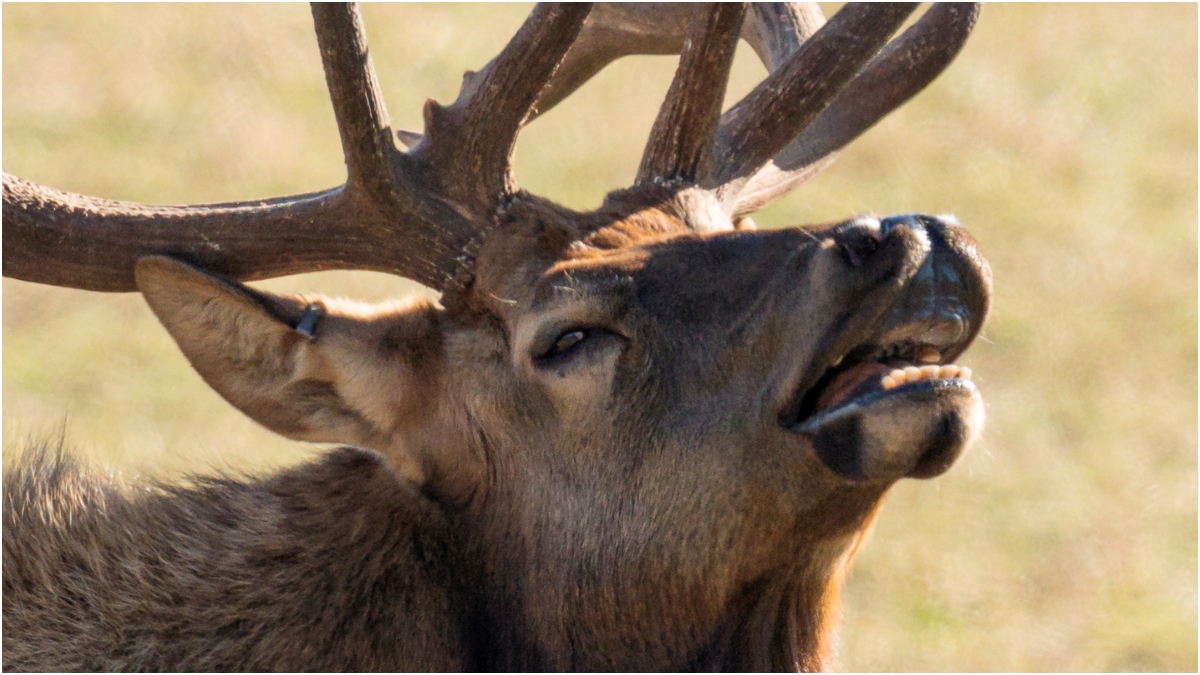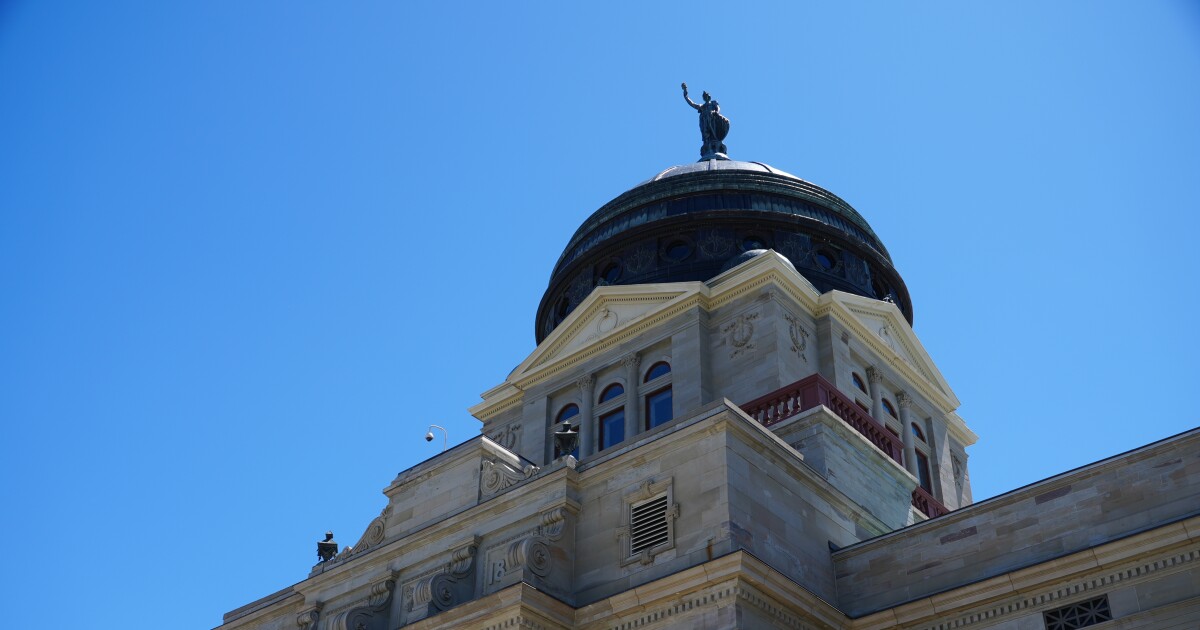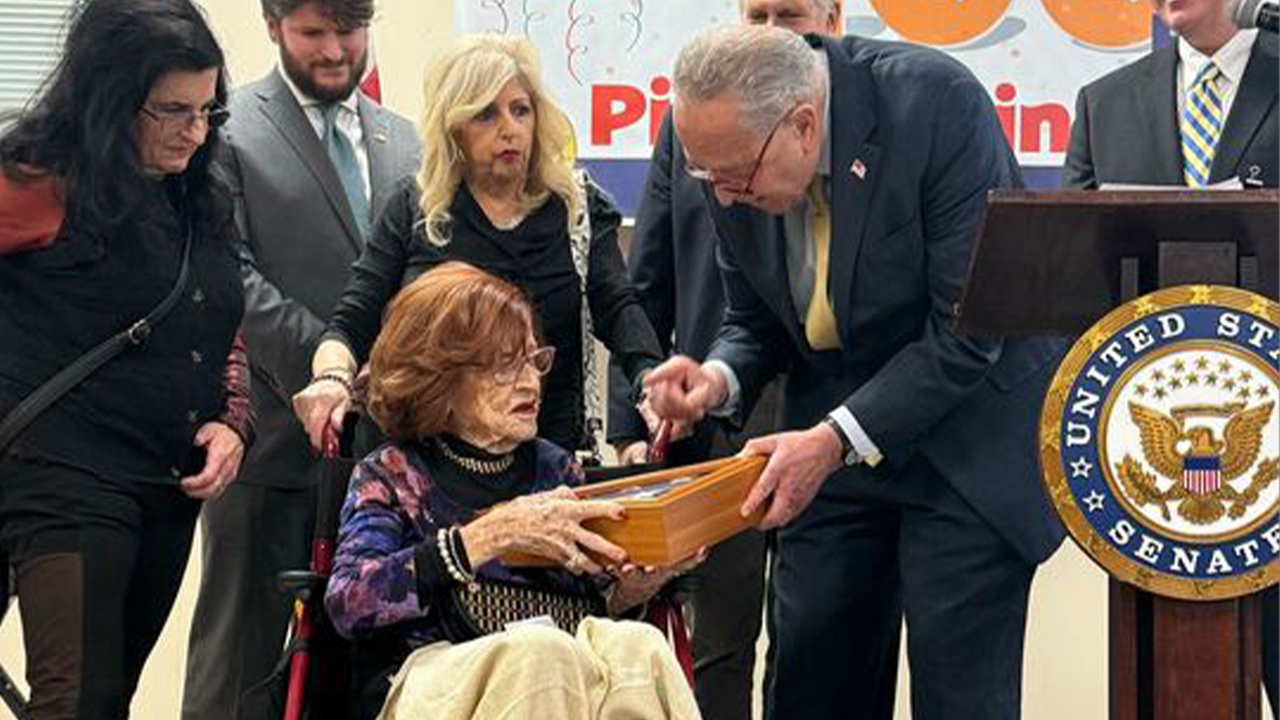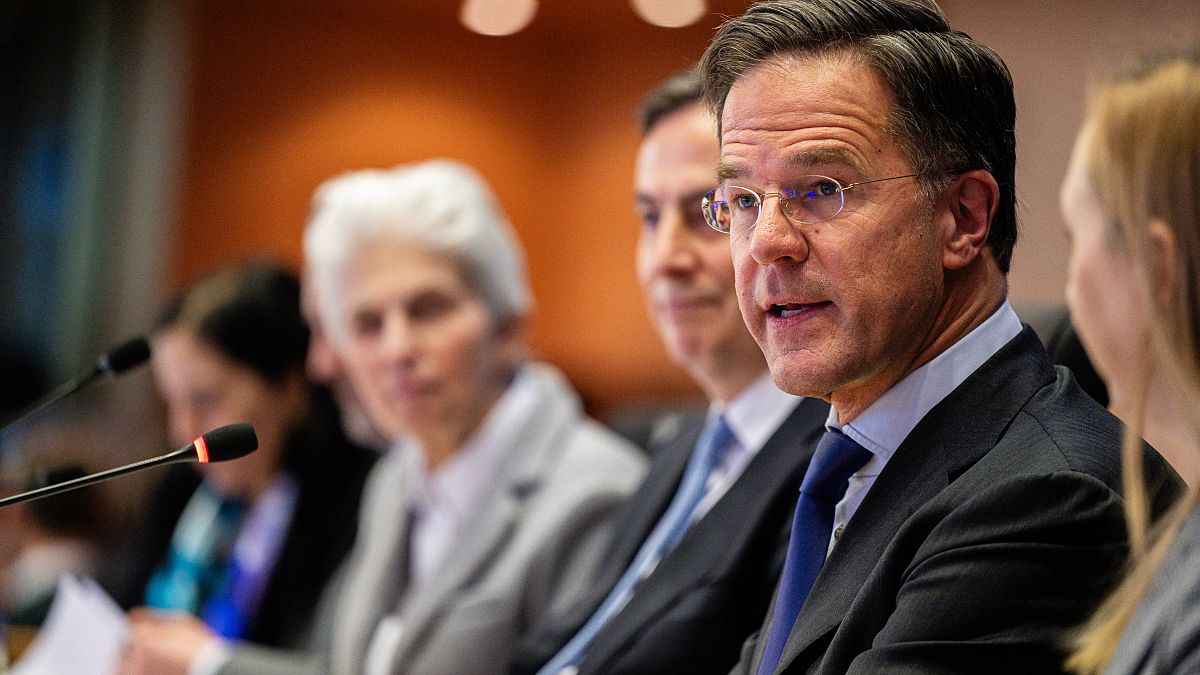Montana
Montana House chamber under renovations

HELENA — Visitors to the Montana State Capitol are going to notice some changes underway in the coming months, as crews start renovations to the House chamber and legislative galleries.
Signs around the Capitol inform visitors that the chamber and gallery areas are closed for legislative area improvements.
“Please be patient with us,” said Jerry Howe, executive director of the Legislative Services Division. “These changes are necessary. We’ll do them as quick as we can.”
Jonathon Ambarian
Workers started moving legislators’ desks out of the House chamber this week. They will replace the carpet in the chamber and the anteroom, potentially make repairs to the subfloor and work on the computer cables and other cables run underneath.
“I don’t even know how to figure out the last time that that subfloor was exposed,” Howe said. “When you want to upgrade a room to add computer access to it, this is as good a time as any.”
Jonathon Ambarian

While the historic desks are out of the chamber, some of them that are in need of attention will get refinished.
“They’ll be taken out individually,” said Howe. “They’re being handled by professional movers. They’ll be taken to a climate-controlled warehouse where the refinisher will have access to them, and they will do piecemeal repairs on them and then bring them back to the warehouse for storage.”

Jonathon Ambarian
Howe says one of their most important tasks is protecting one of the chamber’s most notable features: “Lewis and Clark Meeting Indians at Ross’ Hole,” a 12-by-25-foot painting by Charles M. Russell – the largest the famed Montana artist ever produced.
The Montana Historical Society is responsible for the all the art in the Capitol, including the Russell painting. MHS leaders say the plan is to cover the painting with Tyvek – a breathable material that will still protect it from dust – and to put up a temporary wall in front of it for additional protection.
Jonathon Ambarian

Work is planned in the visitor galleries for the House chamber, Senate chamber and the Old Supreme Court Chamber – a room commonly used for committee hearings during the legislative session. In those areas, crews will be replacing the railings, ensuring the stairs meet with building codes and removing some chairs to create accessible areas for wheelchair users.
“They certainly don’t meet today’s code,” Howe said. “They are not in compliance with today’s code, and this project will help bring them into compliance.”
Howe said the project is an example of many different parts of state government working together, from Legislative Services and the House and Senate staffs to MHS and the Montana Department of Administration. He expects the chamber will remain closed through June of 2024.

Montana
Couple build unauthorized house in Glacier National Park

California couple John and Stacy Ambler are in the midst of a legal fight to keep their home after building it without permission in Glacier National Park in Montana.
Newsweek contacted the Amblers’ legal team, the Flathead Conservation District’s legal team, and the Friends of Montana’s Streams and Rivers for comment via email.
Why It Matters
National parks in the United States are under constant pressure from environmental damages. While the Ambler house is small, allowing it to remain could have major ramifications for how construction in national parks is handled in the future.
The case could also set a precedent for how these kinds of disputes are handled.
What To Know
The Amblers built their home on the McDonald Creek, in Flathead County, Montana, but they quickly faced opposition over environmental issues.
“Glacier National Park did not ‘allow’ the construction on this private property,” the Flathead Conservation District said in a January 2024 court filing. “Glacier National Park has no regulations related to construction on private property. There are rigorous rules related to construction within Glacier National Park (and all federal lands), none of which were complied with by the plaintiffs…The plaintiffs obtained no valid permit, contract or agreement with the United States.”
The Amblers are now facing a federal lawsuit after suing the Flathead Conservation District, arguing that private inholding properties inside the national park are immune from state law as they are a federal jurisdiction.
According to Cowboy State Daily, the Amblers’ home is located in an area where there are no floodplain designations from Federal Emergency Management Agency (FEMA) because it wasn’t mapped. Due to this, the county is limited to regulate floodplain development.
The Amblers’ new neighbors, who were annoyed at the loophole that they used to try and continue building the home, organized the Friends of Montana’s Streams and Rivers (FMSR), which campaigns to protect the integrity of the park’s streams.
The Cowboy State Daily reported that the house can be seen from a nearby bridge, where neighbors keep tabs on the property as they continue to organize against it.
Getty Images
What People Are Saying
Rob Farris-Olsen, an attorney representing Friends of Montana’s Streams and Rivers, said in a statement to the Cowboy State Daily: “It’s frustrating. There’s no continuity of regulation between downstream and upstream. For Wyoming, there’s not a lot of inholdings within Yellowstone. And the ceding of the Grand Tetons to the feds, that was very different than Glacier. I’m not really sure how much of an effect this will have on future Wyoming cases. However, it creates this regulatory void for a lot of inholdings because there’s no building permits necessarily.”
What Happens Next
The case remains ongoing in federal court. If the Amblers are successful, the court could grant them immunity from state law, allowing them to keep the house.
Do you have a story we should be covering? Do you have any questions about this article? Contact LiveNews@newsweek.com.
Montana
Majestic Video Of Elk Her In The Wild Goes Viral: WATCH

An incredible video of an elk herd in Montana is captivating the internet.
Montana is one of the most beautiful states in America. In fact, I’d argue it’s the most beautiful state in America with only Maine (you can read about my working class trip to Maine here) being able to also compete for the top stop.
It has incredible mountains, snow and plenty of wild animals roaming around. The last one is why we’re here today.
Montana elk herd goes viral.
KTVQ News shared a video a woman filmed from her kitchen window near Bozeman of a massive elk herd roaming around.
Generally speaking, we like to see big elk get smoked, but this one is a nice change of pace. It’s a great reminder of the beauty of nature.
You can watch the stunning footage below, and let me know your thoughts at David.Hookstead@outkick.com.
That’s a very cool video, and it’s proof you don’t always have to be shooting something out in nature in order to see something great.
Do we enjoy awesome hunting kills at OutKick Outdoors? Without a doubt, but there is plenty of room for lots of different content.
For those of you who might not know, I used to live in Bozeman and got to see some really cool stuff in Montana during my time there. If you haven’t ever visited, then I suggest you pencil it in. It’s an awesome state.
Hunters kill massive elk in Colorado. (Credit: Getty Images)
What did you think of the video? Let me know at David.Hookstead@outkick.com.
Montana
'It's all about goodwill,' Columbus Radio Club builds global bridges from Montana

COLUMBUS — On Saturday, The Columbus Radio Club met for its weekly gathering at the local firehouse.
“The radio bands we have access to (are) a precious resource, much like the rivers and lakes here in Montana, they’re for everybody,” said Gil Leonard (callsign: NG7IL), a club co-founder.
The club was founded about a year ago when Leonard and his friend, Nancy Wolters (callsign: AA7VE), decided to meet in Columbus after communicating over the airwaves.
“A couple of the guys (ask over the radio), ‘What are you baking today?’” said Wolters. “I’ve never met them. I’ll probably never, ever, see them face to face … That’s part of the beauty of it.”
On Saturday, Leonard gave his first presentation as a club representative at the Stillwater County Library, discussing radio technology.
“Besides advancing the radio art through experimentation, it’s all about goodwill,” said Leonard. “It doesn’t matter if they’re in another continent, or just across state lines, or in your own hometown.”
He was inspired to reach out to the library after he heard a frustrated 7-year-old had returned books on amateur radio technology.
“I kind of wonder if maybe that young man didn’t try to eat an elephant all in one bite,” said Leonard.
He said he plans to offer classes for both adults and children at different paces, tailored to their needs, through the library—provided there is enough interest from the community.
-

 Politics1 week ago
Politics1 week agoWho Are the Recipients of the Presidential Medal of Freedom?
-

 Health1 week ago
Health1 week agoOzempic ‘microdosing’ is the new weight-loss trend: Should you try it?
-
/cdn.vox-cdn.com/uploads/chorus_asset/file/25822586/STK169_ZUCKERBERG_MAGA_STKS491_CVIRGINIA_A.jpg)
/cdn.vox-cdn.com/uploads/chorus_asset/file/25822586/STK169_ZUCKERBERG_MAGA_STKS491_CVIRGINIA_A.jpg) Technology5 days ago
Technology5 days agoMeta is highlighting a splintering global approach to online speech
-

 Science2 days ago
Science2 days agoMetro will offer free rides in L.A. through Sunday due to fires
-

 News1 week ago
News1 week agoSeeking to heal the country, Jimmy Carter pardoned men who evaded the Vietnam War draft
-
/cdn.vox-cdn.com/uploads/chorus_asset/file/25821992/videoframe_720397.png)
/cdn.vox-cdn.com/uploads/chorus_asset/file/25821992/videoframe_720397.png) Technology6 days ago
Technology6 days agoLas Vegas police release ChatGPT logs from the suspect in the Cybertruck explosion
-

 Movie Reviews7 days ago
Movie Reviews7 days ago‘How to Make Millions Before Grandma Dies’ Review: Thai Oscar Entry Is a Disarmingly Sentimental Tear-Jerker
-

 News1 week ago
News1 week agoTrump Has Reeled in More Than $200 Million Since Election Day




















